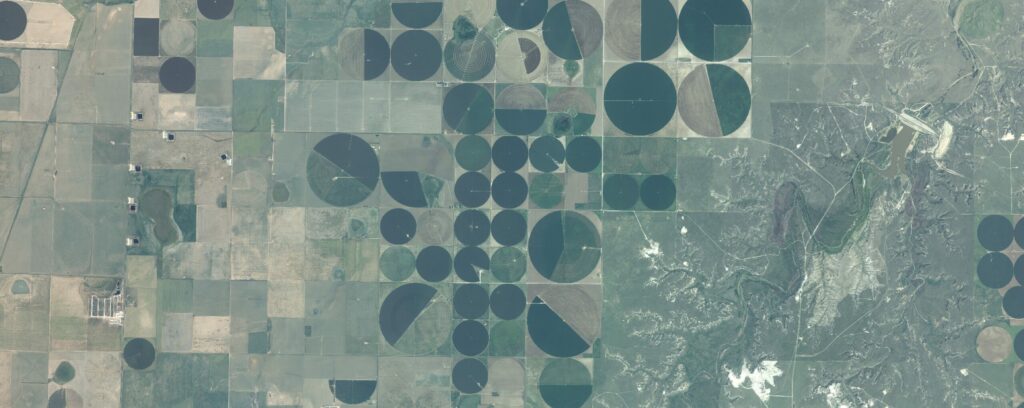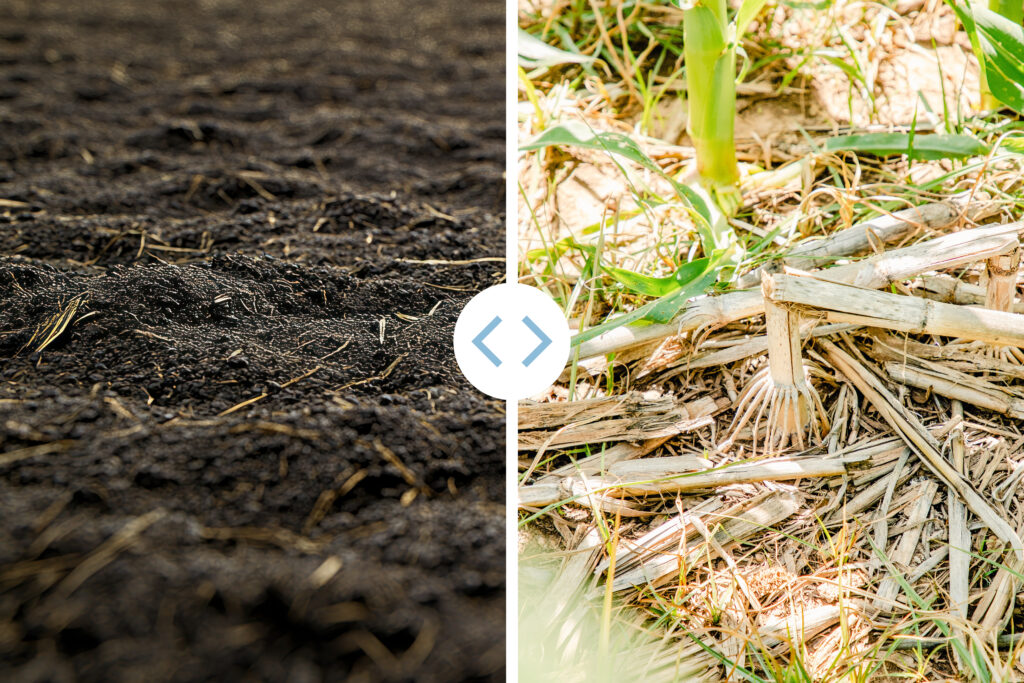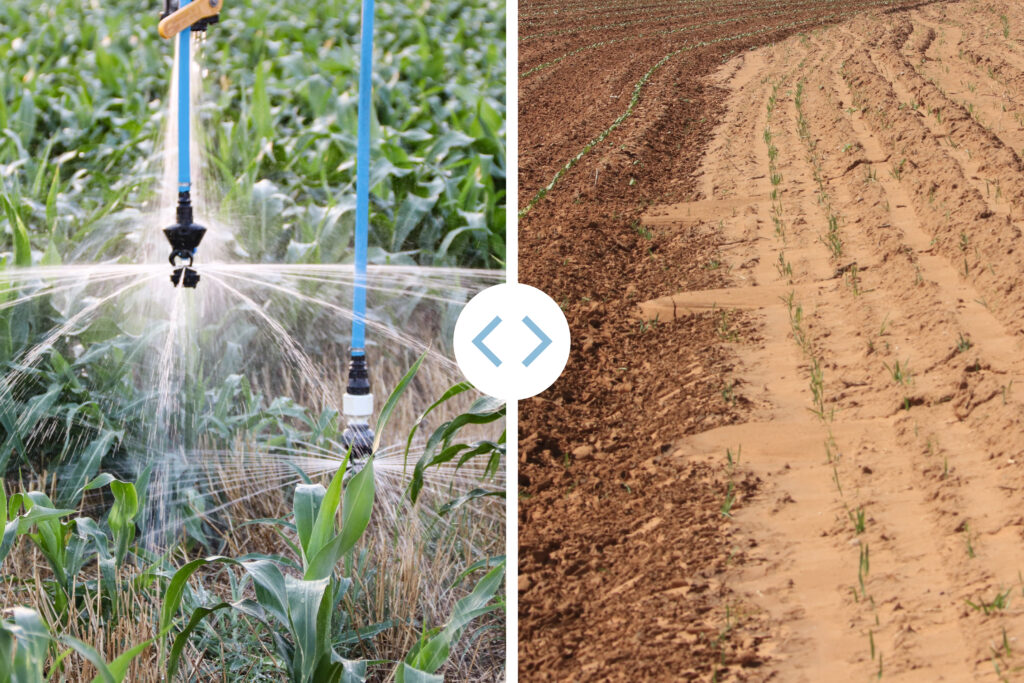Everything’s bigger in Texas, they say — including its wide variety of landscapes. From the Gulf to the Panhandle, the vast, differing geographies of the Lone Star State offer a diverse backdrop for farming. These differences present unique challenges when it comes to water conservation in farming. Every region, crop and farmer require a different approach. While water conservation methods may differ, one thing is clear – Texas farmers are all working toward the same goal: making water last.
Take it from Texas farmer Todd Kimbrell who farms outside of Dallas and said water is the most critical part of his farm.
“It’s literally the number one thing in farming production. You can’t have any production without water, so it’s very important to manage it,” he said.
But why does this matter to all of us? That taco you had for breakfast, the salad you grabbed for lunch, the burgers you grilled for dinner, all began with a farmer making careful decisions about water. We all depend on the same water sources—and that’s why the importance of conserving water matters to all of us.
Bigger State, Bigger Decisions

Farming in a state as vast and varied as Texas can make decision-making complicated. Farmers have hundreds of water conservation methods available to them, but what may work for one farmer may not work for another. Ernesto Favela, a district conservationist with the Natural Resources Conservation Service (NRCS), works with farmers to voluntarily implement water conservation methods. He said farmers consider a wide range of factors like climate, soil type, water availability and temperature, all of which vary dramatically across the state.
“You can go from the very tip of South Texas, it’s almost tropical with so much rain. Then the farther north you come, of course it gets colder and a whole lot less rain,” Ernesto explained.
Beyond varied growing regions, farmers must also consider what kind of crops they’re growing, the equipment they have, and the costs of adopting new methods. That’s why implementing conservation practices is such an individualized process. Ernesto said NRCS works alongside farmers to help them achieve conservation goals tailored to their specific operation and location.
To get a better understanding of the varied methods of water conservation in agriculture, let’s take a closer look at some common practices used across Texas.
Soil Solutions: More Than One Method

Soil health is critical in managing water and nutrients for crops. Todd is a fifth-generation farmer who has experimented with conservation practices over the years in search of ways to protect resources while still generating a productive crop. The way Todd manages his soil health looks very different than, say, a farmer in West Texas.
“It’s not one size fits all. What works for me may not even work for my neighbor,” Todd explained. “We’ve tried all different methods of tillage over the years. Strip tillage didn’t really fit my operation. We will, from time to time, no-till winter wheat into stubble without tillage.”
Strip tillage and no-till are both forms of conservation tillage where farmers limit plowing their fields to keep crop residue on the soil surface, which helps the soil retain more water.
So why doesn’t conservation tillage typically work for Todd? His farm is located in the Blacklands of Central Texas, where the clay soil is heavy, sticky and water retentive, making it hard to manage.
“When our soil gets wet and shaded, it takes an extremely long time for it to dry out,” he said. “In the last three or four years, we’ve had way too much moisture. We literally couldn’t get a crop planted if we hadn’t done some form of tillage to dry it out a little bit.”
In West Texas, where conditions are drier and more arid, minimum tillage and residue management are typically a great fit. There, farmers are focused on holding onto every drop of moisture they can get.
Water Conservation Methods: More Than One Method

Speaking of moisture, farmers manage water differently across the state. In areas with limited rainfall, like the Panhandle, efficient irrigation is a powerful tool for farmers to grow more crops on less land.
“Farmers are trying to improve their irrigation systems so they can produce more out of the land they have instead of using more acres,” Ernesto said.
In addition to using a variety of soil health practices, farmers are investing in efficient irrigation systems like center pivots and drip irrigation. Ernesto explained that the choice of system often depends on soil type, crop, and the needs of their specific operation.
For instance, Ernesto explained that a drip system works great for many cash crops in the region, like cotton and corn, that are grown in fields with tighter soils.
“Since the water is delivered directly to the root zone, it is a very precise and efficient form of irrigation,” he said.
That said, drip systems aren’t ideal for sandier soils where water infiltrates too quickly. Drip also isn’t the best fit if a farmer plans to graze cattle in their fields because hoof action can damage the system.
Beyond the water delivery system itself, farmers are using a host of conservation-focused technologies that further improve irrigation efficiency. Tools like soil moisture monitors, scheduling software, drones and smartphones help ensure water is used only when and where it’s needed.
On the other hand, irrigation isn’t necessary on Todd’s farm. His soils have a high water-holding capacity, and his region receives nearly 40 inches of rain annually, enough to support his crops most years. Additionally, the groundwater on his property is too deep to drill affordably or efficiently.
Instead, Todd’s water conservation methods focus primarily on reducing water erosion from extreme rain events. Todd explained that soil erosion in his fields leads to more soil loss, and that loss doesn’t just affect his farm.
“We don’t want those nutrients that we’re losing in our runoff water going eventually to our drinking water. Even though we’re conventional tillage, we’re very mindful of the soil we’re losing, and we spend a lot of time and effort focusing on that,” Todd shared.
To help manage runoff, he uses earthen conservation structures called terraces, which help slow down water flow. Grassed waterways also help filter runoff before it reaches nearby bodies of water.
Big Responsibility
Whether it’s a center-pivot or drip irrigation system in dry regions or terraces in the rainy Blacklands, Texas farmers are adapting their water conservation methods in ways that make sense for their land.
“I’ve always believed in being open-minded and at least thinking outside-the-box and seeing if something different works to be a better steward and be better as a farm,” Todd exclaimed. “The whole thing, it all goes together like a big circle.”
